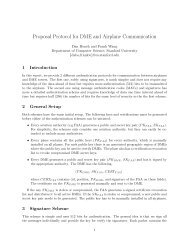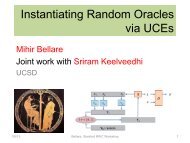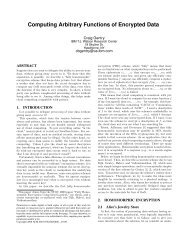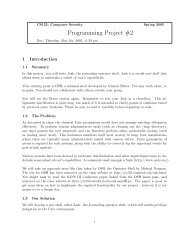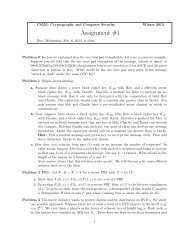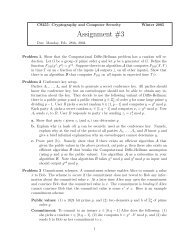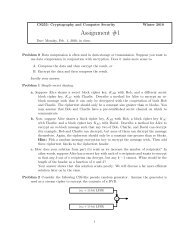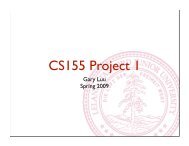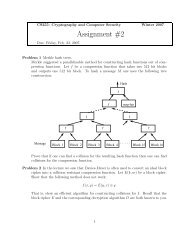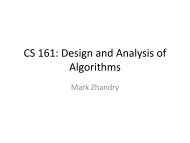Auditing SQL Queries - Stanford Crypto Group - Stanford University
Auditing SQL Queries - Stanford Crypto Group - Stanford University
Auditing SQL Queries - Stanford Crypto Group - Stanford University
Create successful ePaper yourself
Turn your PDF publications into a flip-book with our unique Google optimized e-Paper software.
Algorithm 2 Skeleton of a Weak Syntactic Auditor<br />
(for conjunctive queries and views, step 3 can be determined in time<br />
polynomial in the size of the query expressions)<br />
1: for every query Q = πC Q (σP Q (R)) ∈Q<br />
2: if C ∗ Q ⊇ CA<br />
3: if ∃ t ∈ dom(T × R ′ ×S ′ ) such that PA(t) =1and<br />
PQ(t) =1<br />
4: return suspicious<br />
5: return unsuspicious<br />
6: //T = cross-product of tables common to Q and A<br />
7: //R ′ , S ′ = cross-products of remaining tables in Q and A<br />
suspicious iff such a tuple exists. This is because Q and A are<br />
duplicate-preserving, ensuring a one-to-one correspondence<br />
between output tuples and input tuples that satisfy their WHERE<br />
clause predicates. So if a t ∈T×R ′ ×S ′ satisfies PQ and PA,<br />
the portion of t that comes from T will be indispensable to<br />
both Q and A in an instance containing that tuple. Likewise,<br />
if a t ∈T is indispensable to both Q and A in an instance<br />
where r ′ ∈R ′ and s ′ ∈S ′ , then t × r ′ × s ′ will satisfy PQ<br />
and PA.<br />
In the case of conjunctive queries and conjunctive views,<br />
this compatibility can be checked in time polynomial in the<br />
size of the query expressions. We omit a full proof for lack<br />
of space, and only briefly discuss how this could be done<br />
for predicates over numerical attributes here: The predicates<br />
could be between two attributes or between an attribute and a<br />
constant. <strong>Group</strong> attributes in to equivalence classes based on<br />
equality predicates between attributes. Then a pass over the<br />
inequality predicates between attributes establishes relationships<br />
between these equivalence classes: Create a graph with<br />
vertices of the graph corresponding to the equivalence classes.<br />
Let EA be the equivalence class to which attribute A belongs.<br />
Then for every constraint of the form A



